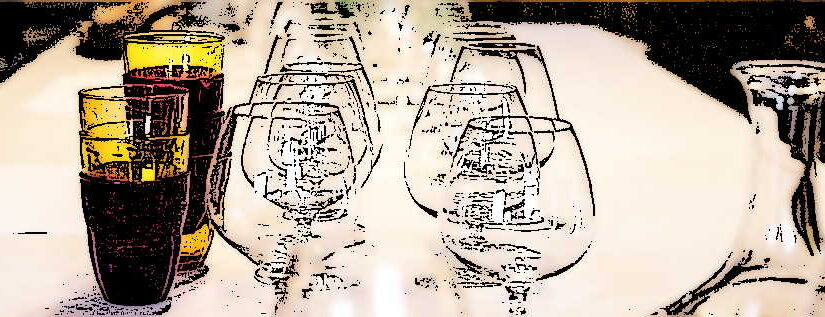Skip to content

Wine Tasting
- Blind Tasting: It is the most objective!
- By wine lovers, with very rare appearances of wine professionals
- Wines at maturity : Between 5 an 20 years of cellaring depending on the strength of the vintage
A Series of Ten Finals
- Eight finals of Appellation: “Graves” (Including Pessac-Léognan), “Médoc” (Haut Médoc, Médoc, Listrac-Médoc and Moulis), Margaux, Pauillac, Pomerol, Saint-Emilion, Saint-Estèphe and Saint-Julien
- A B-final featuring the best wines from the Appellation finals
- An A-final with the super grands crus and pitted against the best wines from the B-final
- Eight super grands crus: Ausone, Cheval Blanc, Haut-Brion, Lafite, Latour, Margaux, Mouton Rothschild and Petrus
- Since 2014, Angelus and Pavie have been added to this list
Hardware
- Cognac glasses with a capacity of 400 ml
- Decanter with a capacity of 1,2 liter
- Placing the bottles in upright position one day before the tasting
- Decanting two hours before the tasting
- Water glasses and spring water for cleaning the mouths
Service
- Service at 17-18°c
- While table napkin
- Filling the glass at the “maximum disk”
- Maximum ventilation of the place before tasting (zero smell)
- No perfume, no lip balm
- No discussion during the tasting (zero talk/noise)
Rating
- Rating out of 20 framed by a minimum and a maximum
- Minimum and maximum defined by mutual agreement with the participants after each has established its own ranking
- Ex-aequo (same score) possible
- Half-point possible
Ranking
- Consolidation of the results with a computer spreadsheet application
- General ranking by calculating the average notes
- Standard deviation separating any ties


